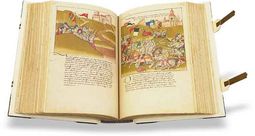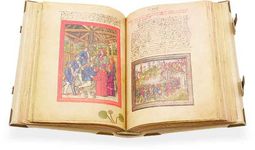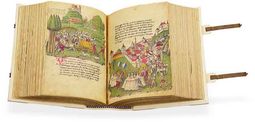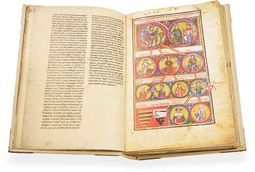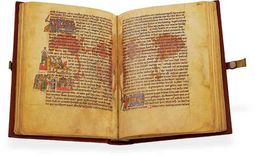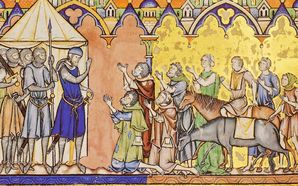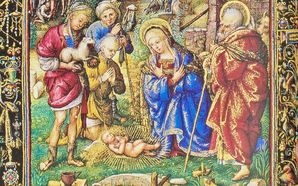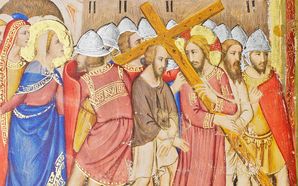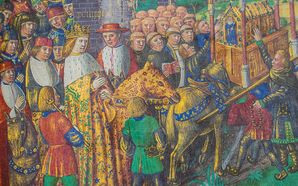Chronicles
Medieval chronicles represent some of the most important sources of information about life during the Middle Ages. Not only do they provide important signposts for major events like coronations and battles, but they are full of information that historians can glean for clues about medieval attitudes and various aspects of daily life.
How these chronicles present historical events is just as important as what they are actually betraying. Medieval chronicles ranged from world chronicles combining biblical history with the events from classical and medieval history, to more specific chronicles dealing with a certain dynasty, city, or knightly order.
Chronicles could be relatively small and unadorned record books, but also included large, extravagantly-illuminated codices by some of the greatest masters of medieval illumination and were made throughout the Middle Ages, with some particularly fine examples counted among the first specimens of European printing.
Demonstration of a Sample Page
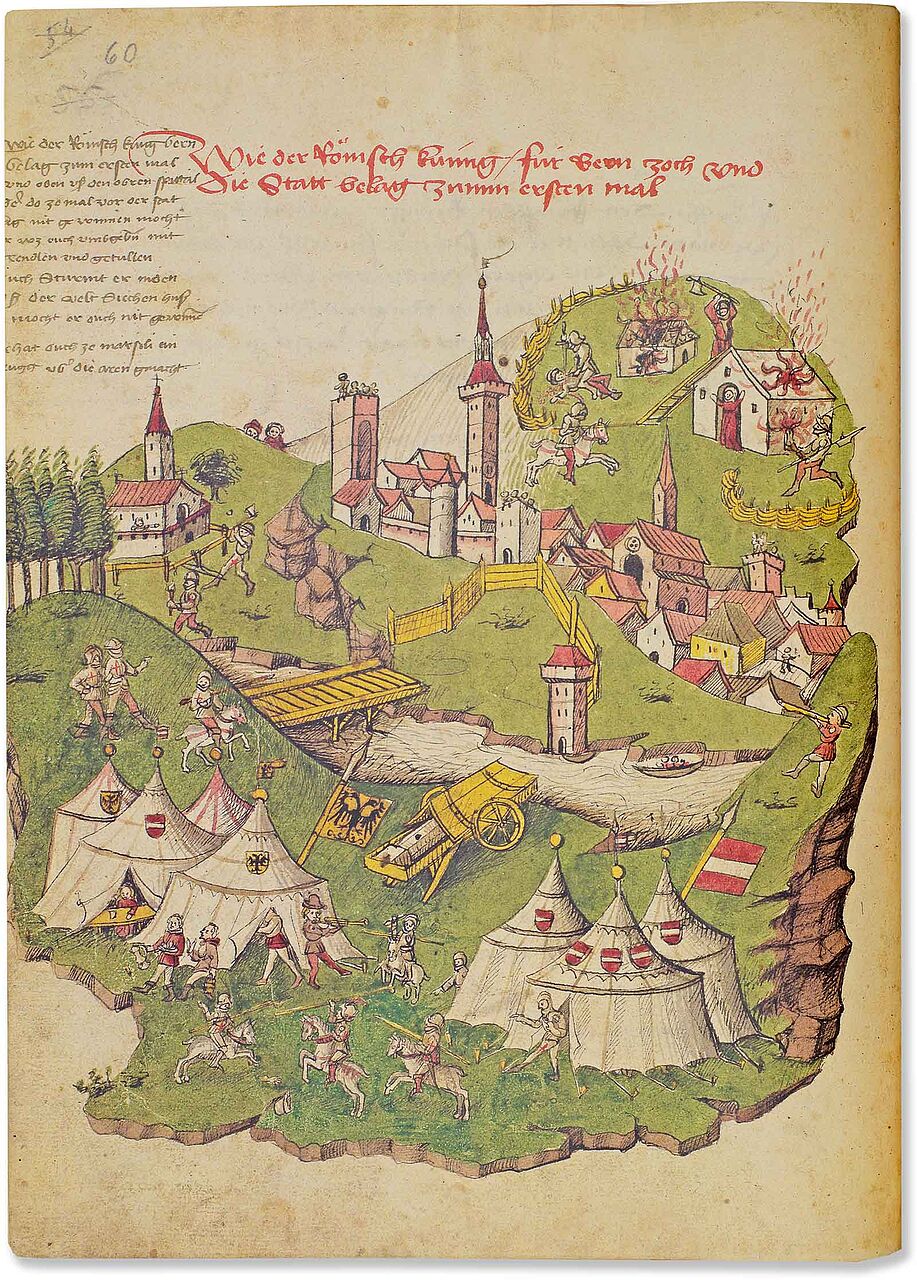
Tschachtlan's Illustrated Chronicle
Hapsburg Forces Despoil the Countryside
After the city of Bern refused to pay taxes to the Hapsburgs, Rudolf von Hapsburg laid siege to it twice, though unsuccessfully. In order to draw the Bernese troops out into the open, Rudolf unleashed his men on the surrounding farms and villages. The plan worked and on April 27th, 1289 Rudolf was victorious in the Battle of Schosshalde, forcing Bern to pay its backed taxes and a penalty, although it remained independent.
In the foreground, we see the red-white-red striped banners of the House of Hapsburg as well as the double-headed Reichsadler (imperial eagle) above the encampment where men-at-arms mix with servants and musicians. A distant village is in flames as its inhabitants are murdered while the Bernese watch from their towers.

